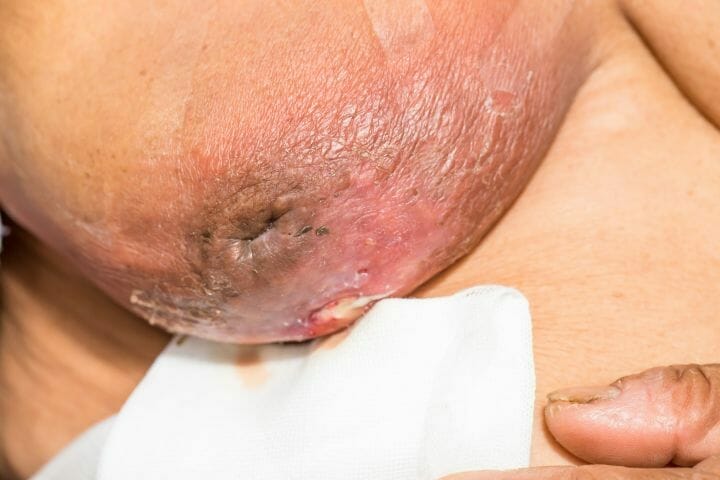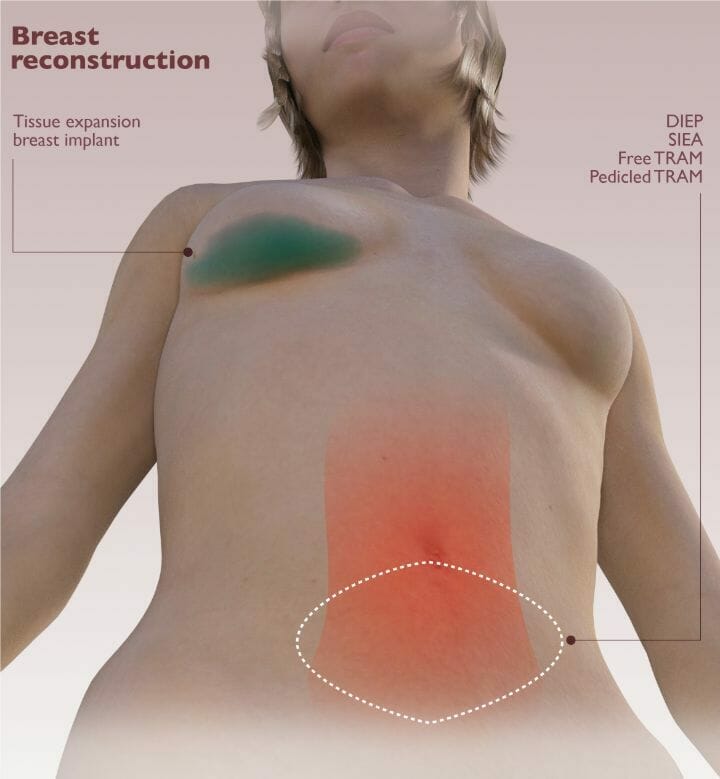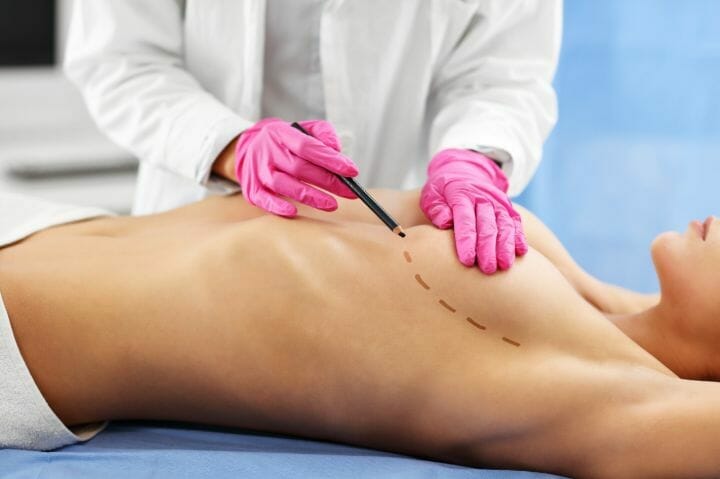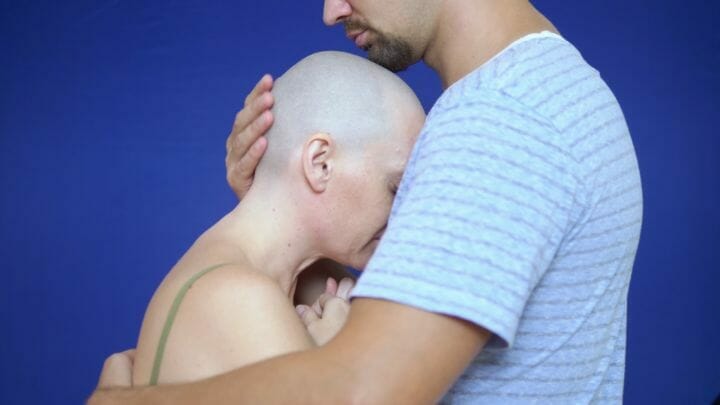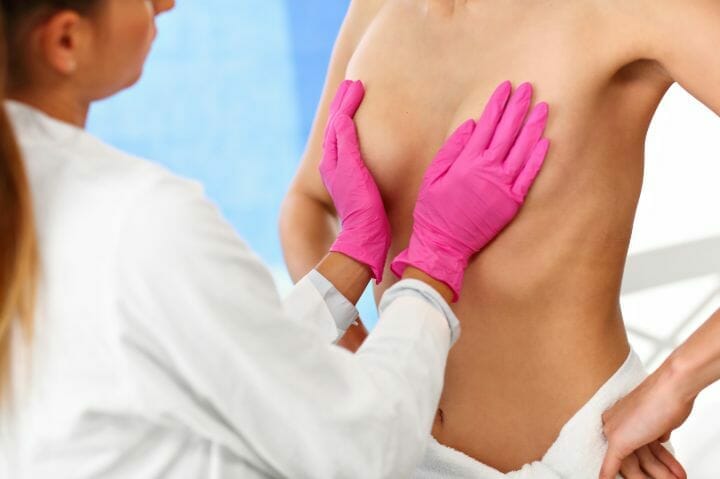In this article, we will share with you tips and tricks on how to reduce drainage after mastectomy.
Contents
Mastectomy is a surgery that is carried out to remove breast tissue to treat breast cancer. More than 100,000 mastectomies happen every year.
Mastectomy is a major surgery that is associated with severe risks as well as some potential complications. This surgical method of complete removal of breast tissue from the breast is one of the most effective ways of reducing the risk of breast cancer.
Your chances of breast cancer after mastectomy reduce by upto 90%. Moreover, you can, later on, undergo breast reconstruction to restore a natural-looking breast.
There are various types of mastectomy:
Total Mastectomy
A total mastectomy includes the complete removal of breast tissue from a person’s breast after being affected by breast cancer. This surgery is carried out in which an incision is done across one’s chest and then removing the cancer tissue.
Learn more about a total mastectomy here:
Lymph Node Removal
Mastectomy, however, is also associated with the removal of a lymph node from one’s armpit. The surgeon does this to reduce the chances of spreading breast cancer after a thorough examination by the pathologist. This type of mastectomy associated with the removal of lymph nodes are of two major types:
Biopsy of a sentinel lymph node:
These nodes are the first ones that you can feel in your armpit. Breast cancer spreads from here in most cases. These nodes often experience a tumor in your breast, which is why they need to be surgically operated and removed. These lymph nodes are then sent to a pathologist for further examination.
Learn more about this procedure here:
Dissection of Axillary lymph node:
if the pathologist detects cancer cells’ presence on the sentinel lymph node, the dissection of axillary lymph nodejumps to action. In this surgery, most of the lymph nodes present on your armpit are removed to eliminate cancer cells from a person’s body.
View an informative video here:
You may also like Best Foot Elevation Pillow
What Is the Purpose of Surgical Drains?
Surgical drains play a vital role in the healing process after mastectomy. The areas where the breast tissues have been removed begin to develop fluid.
These fluids can rupture and slow down your breast’s healing and cause a significant delay in recovery if it is not drained. Moreover, these fluids also cause a lot of discomforts and hence require to be removed.
However, it is essential to clean the surgically operated area and the drain which is induced on it to maintain cleanliness and hygiene and reduce any chances of developing a bacterial infection.
Here is an instructional video to help you maintain cleanliness around your surgical drains:
How Long Do Mastectomy Drains Stay In?
The time required for drains to stay intact on one’s body varies from person to person. Mastectomy drains, in general, are placed on your breast for a minimum of 5 days and can extend up to about three weeks or more, as per the requirement of the person.
For the first two days, there will be about 30 milliliters of drainage per day. The drains are required to be removed frequently and can be done by your nurse. In general, drains are removed 2 – 4 times daily, and the area is thoroughly cleaned every time the drain is being released to prevent any bacterial infection.
You may also like Best Snap Front Robes for Seniors
How Can a Surgical Drain Get Infected?
Drains, if not cleaned properly, can give room for the development of a bacterial infection. Long hours of using a drain can also lead to bacterial infections. You need to be very careful of maintaining hygiene when cleaning the drains and be very particular about rem0ving the drains regularly and very frequently, as and when required. Some symptoms of an infected drain are:
- The body temperature will rise to at least 101 degree F.
- Hardness or firmness in the exit point of the drain from your body
- The skin around the drain will turn red due to infection.
- Thickening instead of thinning of the drained liquid
- Pus will come out of the surgical drain and the pus will have a really foul smell.
- Your drain sites are having pain or discomfort
- The color of the drainage will change all of a sudden along with the smell coming from it.
Taking Care of Surgical Drains
Firstly, you need to be well aware that a drain is present on your body, and it is also connected to a tube that is generally 14 to 18 inches in length, capable of getting tangled up very quickly. Therefore, it would be beneficial to be careful in making even the slightest of movements.
During the initial days of stay at the hospital, a nurse will be assigned to remove these drains and teach the patient how the removal of drains is done. However, there are specific guidelines that you will need to follow later on when you will be removing the drains on one’s own.
- Apply soap and warm water to clean your hands. Then use a clean towel to dry your hands.
- Take the plug (cap) out of the bulb’s top.
- Pour the drain’s elements into a measuring cup.
- Take all the air out of the bulb.
- Put the plug back in the top of the bulb.
- Once you have recorded the amount, make the cup’s contents empty into the toilet to get flushed away.
You may also like Must Haves After Breast Augmentation
Tracking the Drainage
Tracking the drainage is a crucial step that needs to be taken whenever one empties their drain. This helps understand whether or not the amount of fluid being drained is expected and when the use of these drains needs to be ceased.
In general, the amount of liquid that is flowing into the drain will decrease day by day. However, if you are witnessing an increase in the amount of fluid being extracted, you need to consider the areas where you are careless.
An increased amount of fluid flowing is a clear indicator that one has been carrying out more activities than required and needs to slow down immediately. Being careful will help in e healing of the surgical wound sooner.
Some Problems Associated With Drainage
It is evident that having a drain attached to one’s body is not normal and is associated with many difficulties. This means that there are chances of quite a few problems which one can face. Some of these problems can be:
Drainage material increases:
If the person performs activities for a prolonged period, he or she might experience an increment in drainage. However, this is not the case experienced by the persons who take all the precautionary measures and proper rest.
Tube clots:
in case a patient finds a clot in the tube, then he or she needs not to panic. Instead of that kneading the clotted area gently will help him or her to get rid of that.
Lack of vacuum pressure:
An adequate vacuum pressure needs to be maintained once the bulb is empty, in some cases the whole fluid may not get removed. The fluid accumulation can become uncomfortable.
Infection:
It is not uncommon to develop infections on the site where the drain is located, and they likely occur due to a lack of proper care and cleaning. The chances of these infections increase if somehow the drains are not properly placed.
How To Remove the Drains
The drains are removed by a surgeon once the flow of liquid decreases considerably and is negligible. The surgeon removes the drains and tube by firmly holding the drain in place and then cutting the tubes.
The surgeon will gently pull out all the tubings and then completely remove the tube. Once the drain is terminated, you will discover some small holes and scars in the area where the drain was inserted. These will fade over time. The surgeon may also give certain ointments for the quick filling up of these holes and scars.
What Is The Duration For Recovering From Mastectomy?
The recovery period after being surgically operated on mastectomy varies from one person to the other. An average duration for recovery after mastectomy is about 4 to 6 weeks. After mastectomy, the hospital stay is of at least three days and may increase or decrease depending upon your condition and recovery rate.
A mastectomy operation usually takes about 90 minutes. The person undergoing mastectomy surgery will experience some pain after the surgery. It is why they need to stay in the hospital and get the pain-relieving medications through the IV line and some other medicines that need to be consumed directly. Controlling the pain associated with mastectomy leads to a speedy recovery.
Moreover, once discharged, the patient will need to be a little active and not always stay in bed. Walking around will increase the chances of a speedy recovery and lower the risks of developing blood clots and pneumonia. Following the proper diet as suggested by the doctors is extremely important too. It, in turn, allows the patient to stay healthy and thus promotes a quicker recovery rate.
How To Manage the Pain After Mastectomy at Home?
Pain is an everyday occurrence after undergoing a mastectomy operation and will occur even after being discharged from the hospital. There are specific guidelines that you need to follow to manage the pain after mastectomy.
- Take proper medications as prescribed by the surgeon.
- In case you don’t observe any improvement in the pain, then immediately contact the healthcare provider.
- Avoid drinking alcohol.
- Avoid smoking.
- Do not take an overdose of medicine.
When To Contact a Healthcare Provider?
- Anytime that one faces any problem after mastectomy, they must feel free to contact their healthcare provider. There might be specific problems that can turn serious later on, so contacting a doctor is recommended. Some of such cases can be:
- If the redness around the drainage remains for several days (2-3 days).
- If an infection is spotted near the drainage area as mentioned above.
- If a lot of fluid is coming out from the place where the drain tube has been inserted.
- If there is a decrease in drainage output all of a sudden or stops that create an abruption.
- If the density of the fluid is not decreasing with time.
- If the suction of the bulb is lost at any point in time.
- If the drain comes out of the inserted area
What Type of Products Might One Need After Mastectomy?
Undergoing mastectomy or any other operation comes with the need to do many preparations and make a lot of arrangements to have a convenient recovery period after the surgery. Some of the essential steps which you need to take to set up your home before undergoing mastectomy are:
- You should keep the necessary items like a glass of water and pitcher, pill caddy, etc. near your bed
- You need a comfortable place to sleep, like a good chair or a high-end recliner
- You will need a wedge pillow when you are ready to move back to a bed
- A mastectomy pillow to protect your incision.
- Arrange for the groceries according to the diet which needs to be followed.
Apart from these arrangements, there also need to be some essential items that need to be brought before going for mastectomy to recover from the surgery without taking any stress. Some of the vital products which need to be kept at hand include:
- Cardigan or a front-closure vest that has drain pockets
- A mastectomy recovery shirts or any button-up shirt with pockets for drains. For more info, read what to wear after a single mastectomy.
You may also like Best Mastectomy Swimsuits
- A digital tracker on your phone to track drainage, medications, and any queries you may have for your next visit to the doctor
- Dry shampoo
- Tangle teezer
- Cleansing wipes
- Comfortable pajamas
- Memory foam slippers
- Comfortable, front closure bra
Conclusion
The drains which are attached to your body post-mastectomy can be chaotic and challenging to manage. However, handling these drains carefully will be great when it comes to healing the wounds.
Every slightest decrease in the amount of liquid flowing to the drain is another step towards recovering from the post-mastectomy wound and giving you a cancer-free life.
References:




